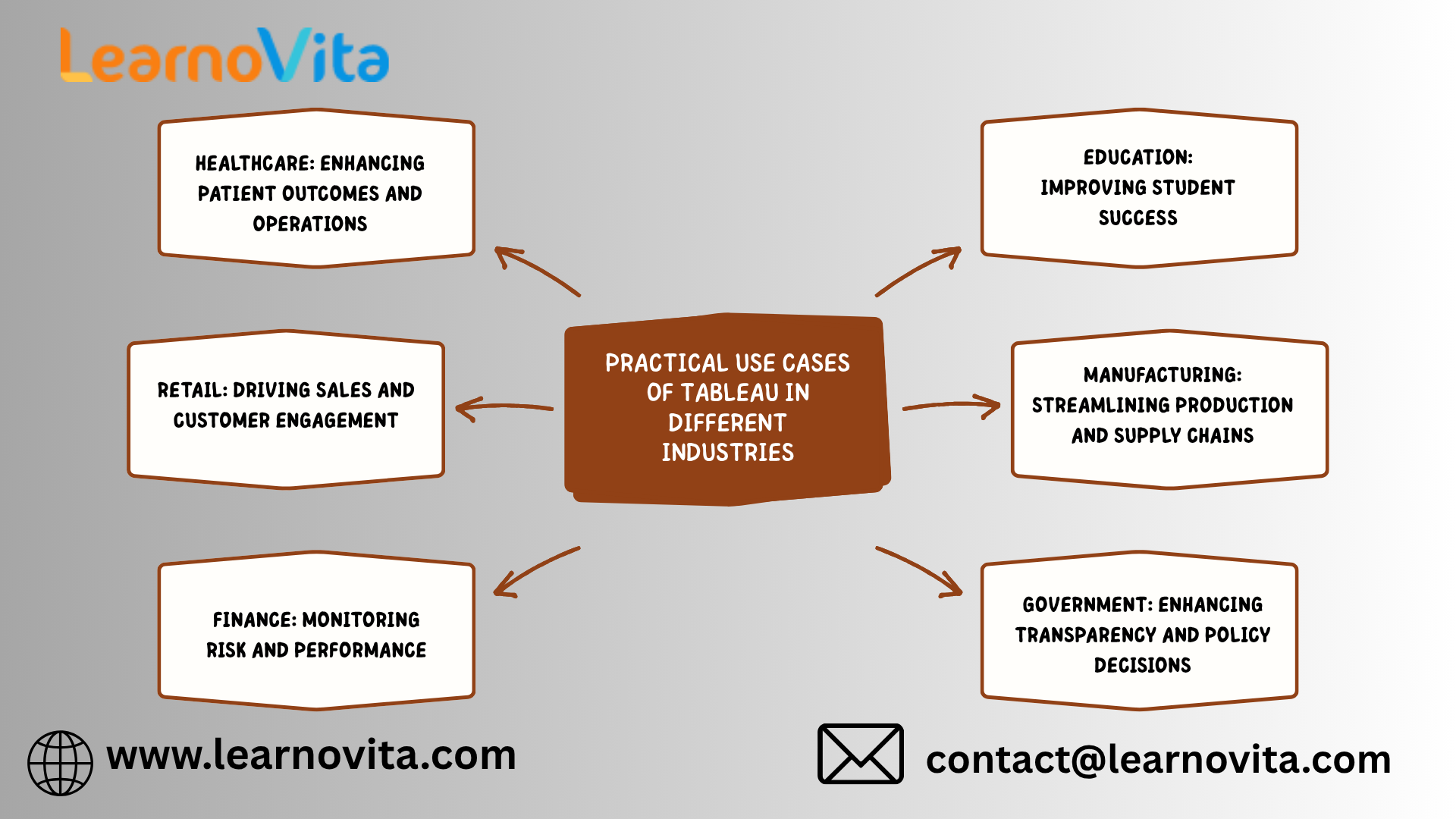Unlocking Industry Potential with Tableau Analytics

In a world driven by data, organizations need more than spreadsheets they need insight. Tableau, one of the most powerful business intelligence (BI) and data visualization tools available today, helps professionals turn raw data into actionable knowledge. With its intuitive dashboards and advanced analytics, Tableau has become a key enabler of smarter decision-making across a wide range of industries. Let’s explore how different sectors are using Tableau Course in Bangalore to achieve efficiency, accuracy, and innovation.
1. Healthcare: Transforming Patient Data into Actionable Insights
The healthcare industry generates massive amounts of data every day, from patient records to treatment statistics. Tableau helps hospitals and clinics make sense of this information quickly and effectively. Healthcare professionals use Tableau to track patient admissions, monitor bed availability, and analyze treatment outcomes. Medical researchers can visualize trends from clinical studies and identify areas for improvement. By providing real-time access to critical data, Tableau enables healthcare organizations to deliver better care, manage resources efficiently, and make faster, data-informed decisions.
2. Retail: Understanding Consumer Behavior and Optimizing Sales
Retailers thrive on understanding what drives customer purchases. Tableau makes it easy for retail businesses to analyze sales data, inventory levels, and customer preferences in real time. With interactive dashboards, managers can compare store performance, identify top-selling products, and forecast seasonal demand. Retailers can also use Tableau to evaluate the success of marketing campaigns or loyalty programs. The result? Improved inventory management, targeted promotions, and a deeper connection with customers all contributing to higher sales and profitability.
3. Finance: Enhancing Risk Management and Performance Tracking
Financial organizations rely on accurate, timely insights to manage risk and maximize returns. Tableau’s real-time analytics help banks, investment firms, and insurance companies visualize key metrics such as revenue, expenses, and compliance data. For instance, banks use Tableau to detect anomalies in transactions and reduce fraud risk. Investment analysts can track portfolio performance, while insurance providers can analyze claims data to identify cost-saving opportunities. With Tableau, financial professionals can make smarter, faster decisions in an increasingly dynamic market.

4. Education: Improving Learning Outcomes and Institutional Efficiency
Data plays a vital role in modern education. Tableau Online Course enables schools, colleges, and universities to analyze student performance, retention rates, and resource utilization. Educators can identify learning gaps, track progress, and personalize teaching strategies. Administrators can use dashboards to monitor budgets, staffing, and enrollment trends. This data-driven approach leads to better academic outcomes, optimized resource allocation, and improved institutional performance all while fostering a culture of continuous improvement.
5. Manufacturing: Streamlining Operations and Reducing Downtime
Manufacturing involves countless moving parts literally and figuratively. Tableau gives manufacturers real-time visibility into production data, equipment health, and supply chain logistics. Production teams can identify bottlenecks, predict maintenance needs, and minimize equipment downtime. Supply chain managers can track deliveries and evaluate vendor performance to ensure smooth operations. By using Tableau’s predictive analytics, manufacturers can reduce waste, improve productivity, and maintain high-quality standards throughout the production process.
6. Government: Driving Transparency and Smarter Policy Decisions
Government agencies manage complex public data related to budgets, infrastructure, and citizen services. Tableau helps them organize, analyze, and share that data transparently. Officials can track spending, monitor project outcomes, and visualize key public health or safety indicators. During crises such as pandemics or natural disasters Tableau dashboards provide real-time insights that support rapid response and informed decision-making. Moreover, publicly accessible Tableau dashboards promote accountability and build trust between citizens and their government.
Conclusion
Across industries, Tableau has proven to be far more than a visualization tool it’s a bridge between data and decisions. From hospitals improving patient care to retailers boosting sales, and from financial institutions reducing risk to governments enhancing transparency, Tableau empowers organizations to act on insights that truly matter. As data continues to shape the future of business, Tableau stands out as an essential tool that transforms complexity into clarity and information into innovation.
- Questions and Answers
- Opinion
- Motivational and Inspiring Story
- Technology
- Live and Let live
- Focus
- Geopolitics
- Military-Arms/Equipment
- Ασφάλεια
- Economy
- Beasts of Nations
- Machine Tools-The “Mother Industry”
- Art
- Causes
- Crafts
- Dance
- Drinks
- Film/Movie
- Fitness
- Food
- Παιχνίδια
- Gardening
- Health
- Κεντρική Σελίδα
- Literature
- Music
- Networking
- άλλο
- Party
- Religion
- Shopping
- Sports
- Theater
- Health and Wellness
- News
- Culture

